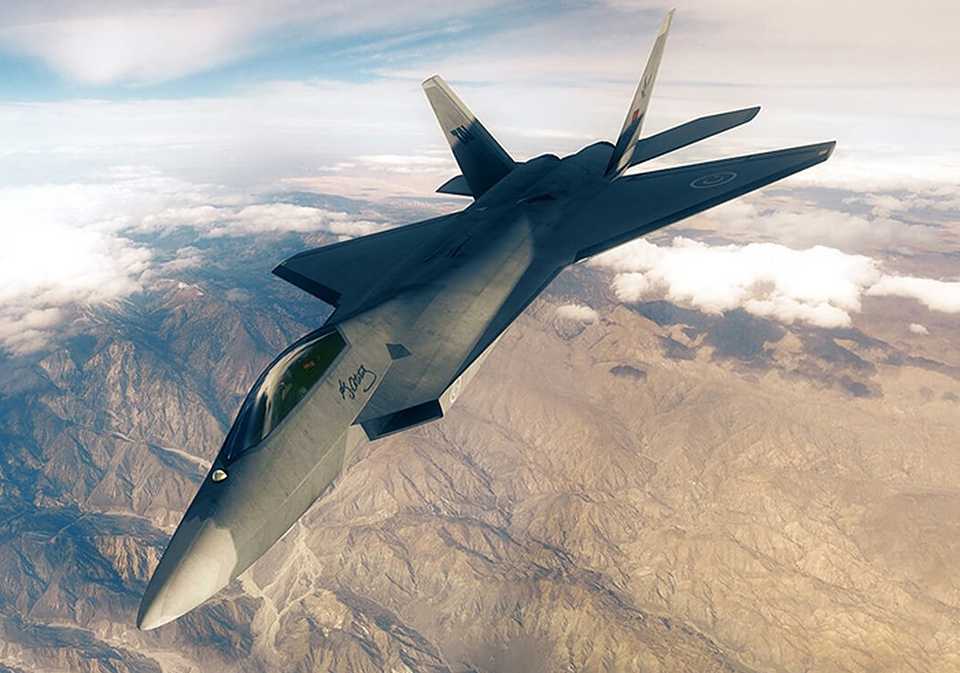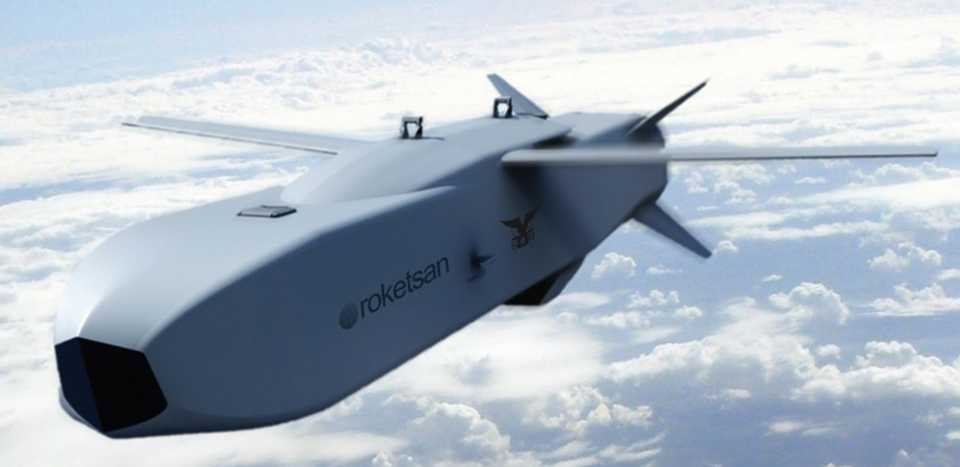Turkish Aerospace Industries is developing Turkey’s first fifth-generation fighter, and has been for some time, well before Turkey’s role in the F-35 programme ended.
Here’s everything you need to know
The TAI TF-X (Turkish Fighter – Experimental) is set to combine the best of a stealth air-superiority fighter, with additional ground attack capabilities and an impressive array of sensors, cutting-edge radar, networked drone control and hypersonic missile capacity.
Here is Turkish Aerospace Industries’ TF-X mock-up.
TAI’s president notes that it is one of the makers of the F-35’s center fuselage, which gives it the industrial strength to build this fighter.
This music is amazing lol. pic.twitter.com/0ZM7HMdF1U
— Valerie Insinna (@ValerieInsinna) June 17, 2019
The fighter jet will feature two engines, a single pilot, and stealth features such as internal weapons bays. Why?
Double the engines equals faster speed, ensuring that energy-intensive maneuvers don’t bleed too much of the plane’s velocity which could otherwise leave it vulnerable or outperformed by a faster opponent.
Having a single pilot gives engineers that much more room to pack more technology into the plane, and is only possible with heavy automation that lets the pilot focus on the mission target, instead of running the fighter jet.
When it comes to stealth, externally-mounted weapons increase the aircraft’s visibility on the radar. The TF-X will also include stealth features such as an advanced carbon-composite body that aims to be radar reflective.
A flying prototype is expected by 2023, with the first plane envisioned to be ready by 2025, and the full fleet of 250 to be operational by 2032. These are planned to replace Turkey’s ageing fleet of 245 F-16 fighter jets, which only have one engine, among other drawbacks. The TF-X could remain in service until the 2070s.

Why does Turkey need the TF-X?
The Turkish Air Force has around 240 F-16s and nearly 40 F-4s. The F-4s are at the very end of their service lives. Thirty of the F-16s are of newer models received between 2011 and 2013. But in general, the Turkish Air Force has to fill in a strategic gap in early 2020 when some of its older planes will be retired.
Meanwhile, neighbours such as Greece have expressed an interest in the F-35, and upgraded their F-16s, while all neighbouring countries are pursuing fourth or fifth-generation fighter jets. With Turkey’s suspension from the F-35 programme, it seems all the more necessary to develop an indigenous stealth fighter that works well with the long-range missile coverage provided by the S400 it procured recently from Russia.
With its own fifth-generation fighter, Turkey would stand to profit by selling it to other countries, while enjoying increased national security with a supply chain that can’t be threatened by sanctions.
What are some facts about it?
At the Paris Air Show, the aircraft was featured with two 12 tonne engines, able to operate at a maximum height of 16.76 km. Just to put that into scale, cloud cover begins at 3 km and higher.
Performance-wise, the TF-X is planned to have a maximum speed of twice the speed of sound, and an operational range of nearly 1,111 km until it runs out fuel, exceeding the US F-35 stealth fighter in a terms of speed, maximum operational height, and matching it in terms of operational range.
The fighter jet is 21 metres long, with a large 14-metre wingspan. The fighter jet will reportedly use an advanced glass cockpit with voice-command interface and data-links so that it controls up to two friendly drones, which may be developed to fire air-to-ground or air-to-air missiles. This could allow it to stalk targets at a distant range without being spotted, sending drones to fire weapons without exposing itself to fire.
What’s the deal with the engine?
The engine remains the most important part of the project and could make or break it. An underpowered engine could lead to performance issues, lower speeds, and deny it the air superiority it needs against fighters.
Until now, various talks have been held with leading engine manufacturers around the world for joint development or technical assistance in building the TF-X engine.
Among these, Rolls-Royce seems to be the leading candidate, forming a joint venture with Kale, one of the leading private defence companies in Turkey, which developed a turbojet engine for the stand-off cruise missile. Negotiations are still ongoing.
The Russian state-owned corporation Rostec, which built engines for the Sukhoi 57 (Su-57) fighter jets, has expressed interest in developing thrust-vector engines for the TF-X.
A thrust-vector engine, unlike a normal fixed one-direction engine, can angle itself in a number of directions, allowing it to make tighter turns or difficult manoeuvres with ease.
How will it be armed?
Aside from the standard repertoire of missiles the fighter jet will be able to carry, Aselsan is set to produce the sensors and avionics of the fighter jet. Aselsan is also currently developing an AESA radar, (Active Electronically Scanned Arrays); which would allow the plane to focus radar in different directions without moving a thing.
Roketsan is the main player in Turkey when it comes to missiles and rockets. It already manufactures hypersonic SOM (Stand-off missiles), initially developed by Tubitak. It was working on a version for the F-35 with Lockheed Martin called the SOM-J, but given Turkey is no longer involved, it seems likely it will be adapted to the TF-X.

A stand-off missile is an intelligent hypersonic manoeuvring missile that can be fired from a distance, travelling faster than any known air or missile defence systems that currently exist with a 5 meter target accuracy radius. To put that into perspective, a hypersonic SOM would travel at Mach 5, or 1.6 km per second. Due to it’s intelligent maneuvering capacities, the SOM can fly close to low terrain, dipping beneath radar coverage before surprising a target with its sudden appearance.

